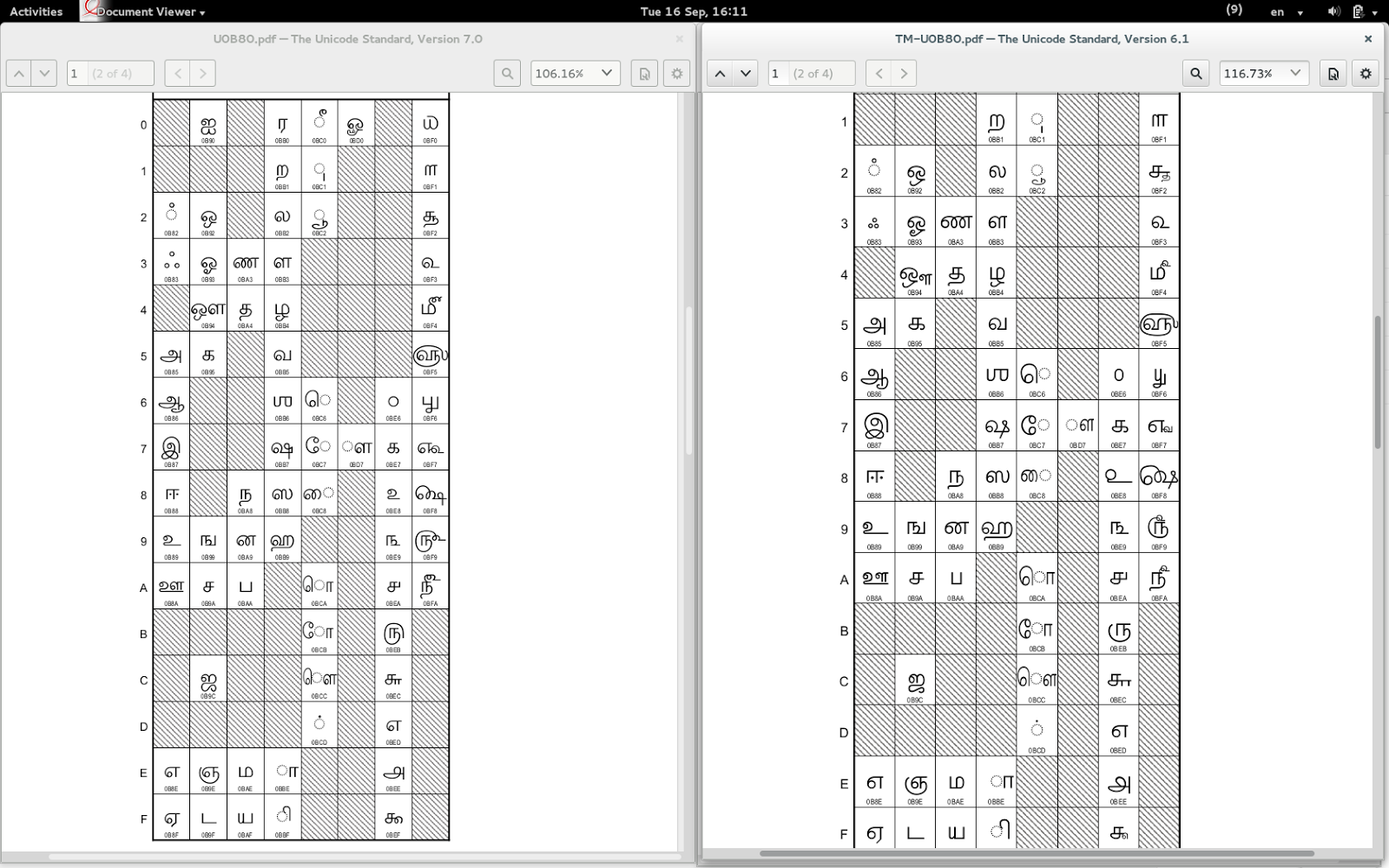Done with the release of Lohit Tamil 2.91.0 with the improvements planned under Lohit2 project.
Following are highlights:
This release now support characters required for minority orthographies. For more details visit bugzilla
Stopped using deprecated ligature for SRII. See bugzilla for more information.
Following are highlights:
- Rewritten all Open type tables with supporting taml and tml2 tags.
- Renamed all the glyphs by following AGL syntax.
- Open type tables are available in .fea file and this time it is compiled with AFDKO.
- Reusing glyphs by "COPY REFERENCE"
- Added GRID FITTING table and auto-hinting by fontforge. (Need
to use ttfautohint but we need Latin support to do that)
- Tested with Harfbuzz NG and Uniscribe (W8) (Need to test on WinXp yet)
- Auto test module available with test files. (Please help me to add more test cases.)
This release now support characters required for minority orthographies. For more details visit bugzilla
Stopped using deprecated ligature for SRII. See bugzilla for more information.

